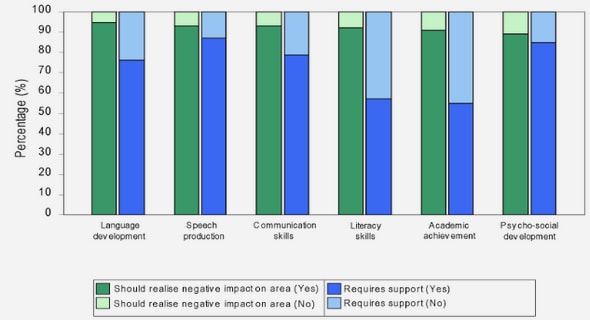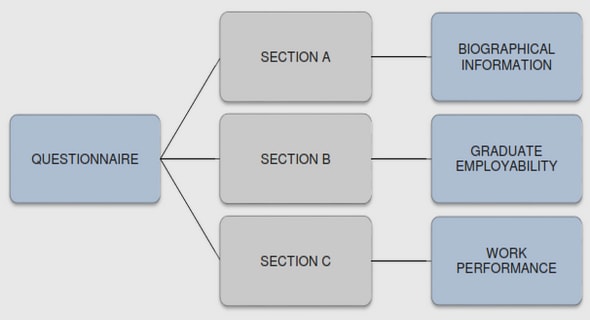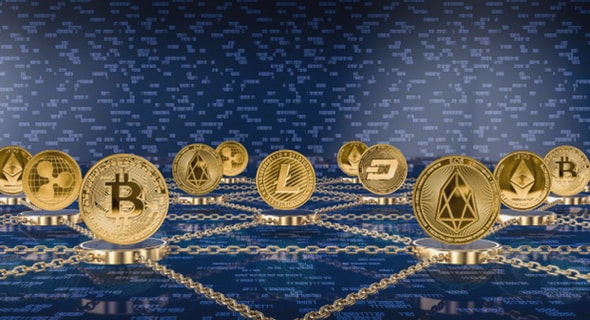Get Complete Project Material File(s) Now! »
Chapter 2 The GM food debate and public diplomacy: A conceptual discussion and literature review
The purpose of Chapter 2 is to present a conceptual framework of what genetically modified organisms (GMOs) and genetically modified (GM) foods are. I will show that there is a serious worldwide debate about GMOs, and two opposing positions have emerged regarding advantages and disadvantages of GM foods. In the first part of this chapter, I will introduce the reader to the importance of biotechnology and the advances that this field offers. I will explain the main applications and the evolution of this technology, and will clarify the importance of biotechnology and GM foods in the international arena. Additionally, I will introduce the main terms and definitions regarding GM foods that will be used in this thesis.
In the second section, I will explain the debate about GM foods, presenting the opinions of the pro-GM food groups and then the opposing arguments. I will explain how the different arguments have stimulated the worldwide debate of GMOs. In the third section of this chapter, I will present a survey of the GM food regulatory approaches that exist up to the present around the world. The two main GMO regulatory approaches will be discussed and an exploration of which international organizations intervene in these two approaches will be presented as well. Additionally, the regulatory approaches to GM foods and the trajectory of the main events and controversies that have evolved in the United States (US) and Mexico will be analyzed in the fourth section.
In the last section of chapter 2, I will present the key concepts regarding public diplomacy that guide my research. I will propose a public diplomacy model to analyze the actors, instruments and targeted institutions and stakeholders involved in US public diplomacy activities to promote GM foods in Mexico. I will explain the main types of strategies that the US government uses in public diplomacy activities toward Mexico, such as reactive, proactive, and relationships building. Lastly, an explanation of the strategies of the non-state actors that reinforce the public diplomacy efforts will be provided.
Biotechnology and GM food development
The twentieth century has been characterized by advances in science and technology. Biotechnology has spread around the world and has allowed the development of new products. It has made a significant impact in the fields of agriculture, medicine, food technology, and business. This sort of technology has allowed scientists to develop organisms and products that never existed before, such as medicines to cure new diseases, or the case of cloned animals, Dolly the sheep.1 Additionally, biotechnology has allowed the creation of crops and foods with new specific characteristics, such as pesticide resistance. Even though biotechnology has brought many benefits to humankind, it has also awakened fears and misunderstandings. Therefore, it is imperative to analyze what biotechnology is, how it has evolved, and what the development and promotion of GM foods imply.
Biotechnology refers to a set of scientific techniques to improve or modify plants, animals, and microorganisms which will be used later on to develop products.2 One of those techniques is genetic engineering which involves isolating and transferring genes, or DNA sequences, from one organism to another through manipulation in a laboratory, to induce a specific characteristic.3 The result is a genetically modified organism (GMO). For the purpose of this study, I will refer to the term biotechnology to the development and application of genetic engineering in agriculture, that is to say, agricultural biotechnology, excluding biotechnological developments in medicine, genomics, drugs, organs, or tissues. The term GMOs includes animals, plants, bacteria, virus, plants, seeds, crops and transgenic foods or genetically modified foods.4 In this thesis, the term GM foods will be used to refer to genetically modified crops, seeds, foods, feed, and derived food products such as flours, syrups, flavors, oils, or colorants. Additionally, I will limit the definition of GMOs so that I will not consider GM bacteria, virus, or cloned animals when referring to GMOs, but I will include GM trees, plants, crops, and foods.
Biotechnology has evolved over the last thirty years. However, in the two last decades, the major advances in this area have accelerated. Genetic engineering emerged in the 1960s, and the first tests started in the 1980s.5 The first GM products were commercialized in the 1990s, and the first GM food product for public consumption was approved in the US in 1994.6 Commercial GM crop production on a large scale started in 1995-1996, yielding higher production, lower pest control costs, and greater competitiveness.7 The fact that GM crops have been cultivated and commercialized for almost two decades implies that people have been using and consuming GM foods all these years. Currently, some GM foods commercialized are corn, soybean, canola, cotton,8 potatoes, tomatoes,9 papaya, squash, and cantaloupe.10 As a result, genetic engineering used in crops is only one example of many different biotechnology applications, all of which have generated social and political debates.
Much GM food literature has hitherto concentrated on the scientific perspective of the topic, identifying possible risks or benefits of GM foods and their implications for the environment.11 Some studies criticize the role of science and the biotechnology intrusion into the culture, and some related ethical concerns, such as consuming natural or unnatural products or adding ingredients that are not allowed by religious principles.12 Others analyze international organizations such as the United Nations (UN) Convention on Biological Diversity (CBD) with the Cartagena Protocol on Biosafety13 as a counterpart to the World Trade Organization (WTO) Sanitary and Phytosanitary Measures standards that regulate GM foods.14 Other studies examine the commercial biotechnology developments in the United States. For example, Jorge Niosi has argued that while the biotechnology industry in the US is innovative, it is also too complex because of the elaborated scientific networks required to support US development and application research. He notes that the rest of the world cannot duplicate these advances because other countries do not have a similar network of institutions to develop biotechnology.15 Although considerable research has been devoted to risk assessment and comparing different biotechnology regulations,16 less attention has been paid to the role of varied actors involved in the political processes, the influence of domestic and international forces, and the problems of how different political outcomes have emerged.
Biotechnology will remain controversial because it involves the manipulation of life. As an industry, biotechnology has transnational implications which involve the movement of information through different formal and informal channels of communication.17 Thus, advances in science and technology may have repercussions for state-to-state relations, modifying their political, economic, and social interactions.18 In fact, the interaction of biotechnology with international relations is not new. It started with the Green Revolution during the Cold War which demonstrated how countries could adopt technical knowledge from abroad to solve development problems, and such incorporation forced policy-makers to pay attention to the role of science and technology in the exercise of diplomacy.19 Biotechnology is still a complex issue in international relations because it involves political, economic, and social aspects. Therefore, there are different approaches and perceptions worldwide that are worthy of analysis.
The debate about genetically modified foods
Conventional breeding is a way of performing biotechnology which has been done by farmers for centuries without raising any concerns. However, biotechnology as a sophisticated and quick way of doing crossbreeding is perceived as risky by some farmers, environmental groups, and the public. Therefore, GM foods have not only opened windows of opportunities, but also have raised many doubts, ethical questions, safety challenges, and concerns about their reliability.
Two broad positions have emerged in the GM food debate. On the one hand, proponents of GM foods emphasize the benefits of biotechnology. For example, GM foods may help alleviate world hunger because they can yield cheaper, stronger, and healthier foods, as well as prevent food shortages and environmental degradation.20 Additionally, GM foods are potentially a tool for food security,21 or an alternative to incrementing agricultural production offering new products, cost reduction, and environmental protection.22 GM seeds may produce crops less susceptible to climate changes, tolerating frost and drought, and extending the growing season.23 GM seeds can be used for biopharming,24 thus reducing drug production costs.25 Some GM foods may be used to improve human nutrition and solve some health problems, for instance, rice fortified with vitamin A and iron to combat blindness, oils designed to decrease the risk of diseases related to obesity, and vaccines administered through fruits.26 Biotechnology proponents also argue that GM crops may contribute to sustainable agriculture, climate change mitigation, pesticides and CO2 emissions reduction, biodiversity conservation, and even alleviation of poverty in some regions.27 These GM food developments may be translated into achieving agricultural efficiency, solving public health problems, and opening trade opportunities to biotechnology companies.
On the other hand, opponents of GM foods, predominately environmentalist groups, focus on the threats and risks of GMOs,28 the possible harm to the environment, or the concentration of agribusiness power.29 Environmentalists argue that GM foods may affect human health by causing allergic reactions, cancer epidemics, and antibiotic resistance.30 Additionally, GM crops may have side effects and cause damage to the environment. For instance, some genes may move from one GM crop to another conventional crop in nature, carried by pollen or dispersed by the wind, and thus affect biodiversity.31
Also, GM crops resistant to herbicides and pesticides might harm insects and plant life cycles,32 and therefore, disturb the native flora and fauna of some regions.
Some opponents query the corporatist nature of GM foods where the technology is the property of only a few corporations, and thus this limits food sovereignty and encourages dependency on those companies for buying seeds, emphasizing the dominance of Monsanto in this issue.33 There are also some religious and ethical concerns, such as the morality of human beings willfully manipulating genes or life.34 In addition, biotechnology does have the potential for biological weaponry because of the ability to manipulate bacterial and viral DNA and to produce new toxic and chemical agents, as well as its latent use in bioterrorism where crops and animals can be targets.35 Some organizations opposing GMOs highlight in their campaigns the possible influence that biotechnology companies have over policymakers. For example, they have focused on how biotechnology companies invest in advertising campaigns to avoid compulsory labeling in some states in the US.36 Others emphasize that American government agencies are working not only locally, but also internationally to promote the seed industry of biotechnology companies at the taxpayers’ expenses.37
Arguably, some state resources are being used to support biotechnology companies and promote technology cooperation, but at the same time, these types of campaigns jeopardize the cultural practices of the societies in which biotechnology promotion is made, generating dependency on the companies producing GM foods38 and also threatening local markets and producers.39 Furthermore, some new developments in biotechnology have been carried out by private companies in order to achieve their own economic goals,40 not for solving public problems or relieving world hunger as biotechnology proponents recommend. Governments are no longer investing large amounts of money in scientific innovation, leaving private companies to develop what they consider more important goals, increasing the distance between their business interests and the needs of people.41 For example, in Mexico, conventional breeding is locally important for farming production and employment. However, public institutions for scientific research that are intended to provide objective scientific information are losing the government’s financial support. The International Center for the Improvement of Maize and Wheat (CIMMYT) halted conventional plant breeding activities because of budgetary deficits and reduction in funding, emphasizing technological discontinuities,42 and leaving space for private interests to grow.
There is a problem in concentrating scientific power in just a few biotechnology companies that are not in tune with the local needs or public demands.43 In reality, the current research priorities of private companies will not change unless the government gives them financial incentives to do that.44 The US government takes action to promote technology and expand exports of GM seeds; it invests in public diplomacy activities to emphasize GM foods benefits on the one hand while instructing biotechnology companies on their social responsibility on the other. However, GM foods are not suitable for everybody and only a few American companies are making profits out of exports.
These opportunities and challenges have precipitated a global debate about GM foods. As I have indicated, there are advantages and disadvantages of adapting and adopting GMOs. Furthermore, the US is the main promoter of GM foods, with GM crops produced mainly in the US and in some other like-minded countries such as Canada, Brazil, Argentina, China,45 and a few countries in the European Union such as Spain.46 In contrast, six core member states of the European Union, Austria, Denmark, Luxembourg, Greece, France, and Italy have banned the importing and retailing of GM foods.47 In Mexico, regulations have gradually changed toward allowing GM food commercialization despite the lack of public acceptance and the potential threat to social and cultural practices. To explain how and why this policy change in Mexico has occurred is the objective of this thesis.
Worldwide regulatory approaches toward GM foods and biotechnology
In the United States, GM foods have been continuously consumed for over a decade, at least as an ingredient in processed foods like beverages or bread. There is no scientifically conclusive evidence that these GM products are harmful to humans, at least not those authorized for human consumption.48 In contrast, there is evidence supporting the benefits of GM foods. However, this GM food debate does not have a middle point; there is always a position against or in favor, with each of its proponents convinced of its perspective.49 These polarized positions, mixed messages, and distorted arguments have contributed to consumer skepticism and public emotions. Since the 1970s, when biotechnology offered its first developments, opponents started to find links with other sociopolitical issues such as the environment protection, the future of technology, and the manipulation of the building blocks of life and thus raising moral concerns.50 The complexity of the biotechnology debate is a result of different influential forces in the society, like economics, government, regulation, mass media, politics, and religion.51 These differences in positions have been intensified by the influence of non-state actors, such as non-government organizations with environmental concerns, private interest groups, and the public, in the name of consumer safety, with all these actors shaping debates around the world.52
A good example to illustrate the forces affecting the GM food debate is New Zealand. The Royal Commission on Genetic Modification made a study of biotechnology. In that analysis, the Royal Commission identified a broad spectrum of relevant concerns, such as culture, ethics, spiritual issues, environment, human health, economy, legality, and social and medical aspects.53 In addition to those concerns considered by the Royal Commission, the GM food debate implies other factors such as world trade, intellectual property rights, patenting of life forms, use of genetic information, funding of research and development, role of science in society, public participation in science, animal rights, biodiversity, environmental conservation, organic farming, vertical integration of the food chain, and product labeling.54 Not only has the role of science as a generator of new applications been highlighted, but also the concerns that new technological applications may have on the lifestyles and standards of living.
Chapter 1 Introduction
Chapter 2 The GM food debate and public diplomacy: A conceptual discussion and literature review
2.1 Biotechnology and GM food development
2.2 The debate about genetically modified foods
2.3 Worldwide regulatory approaches toward GM foods and biotechnology
2.4 US and Mexico regulatory approaches to GM foods
2.5 US public diplomacy in the context of biotechnology
Chapter 3 Research design
3.1 Key research questions and hypothesis
3.2 Methodology
3.3 Selection of case studies
Chapter 4 US government agencies: The use of public diplomacy strategies and instruments to influence stakeholders in Mexico
4.1 The US Department of State: Strategic resources and instruments
4.2 The US Department of Agriculture: Strategies and instruments
4.3 The FAS-Mexico City: Resources and promoters employed in Mexico
4.4 Mexican government agencies and scientific institutions targeted
Chapter 5 MNCs involved in US public diplomacy
5.1 Relevance of MNCs for public diplomacy activities
5.2 Identification of relevant MNCs
5.3 Strategies, instruments, and resources
5.4 Messages delivered by biotechnology companies
5.5 Stakeholders targeted in Mexico
Chapter 6 NGOs involved in US public diplomacy
6.1 Relevance of NGOs for public diplomacy activities
6.2 Identification of NGOs participating in public diplomacy
6.3 Strategies, instruments, and resources
6.4 Messages delivered by NGOs
6.5 Stakeholders targeted in Mexico
Chapter 7. How the Mexican government has incorporated proponents’ and opponents’ arguments and made decisions
7.1 Evolution of GMOs legislation in Mexico
7.2 Lack of a biosecurity and biotechnology national policy
7.3 Current governmental positions toward GMOs in Mexico
7.4 GMO cases in Mexico
7.5 Challenges faced by the Mexican government
Chapter 8. Assessment of the public diplomacy model: Lessons from the effectiveness of government agencies, MNCs and NGOs food diplomacy
8.1 Government agencies
8.2 MNCs
8.3 NGOs
8.4 Lessons
Chapter 9 Summary, political implications, policy recommendations, limitations, further research, and conclusions
9.1 Summary of chapters
9.2 Political implications and speculations
9.3 Policy recommendations
9.4 Limitations
9.5 Further research
9.6 Conclusions
List of references
GET THE COMPLETE PROJECT


